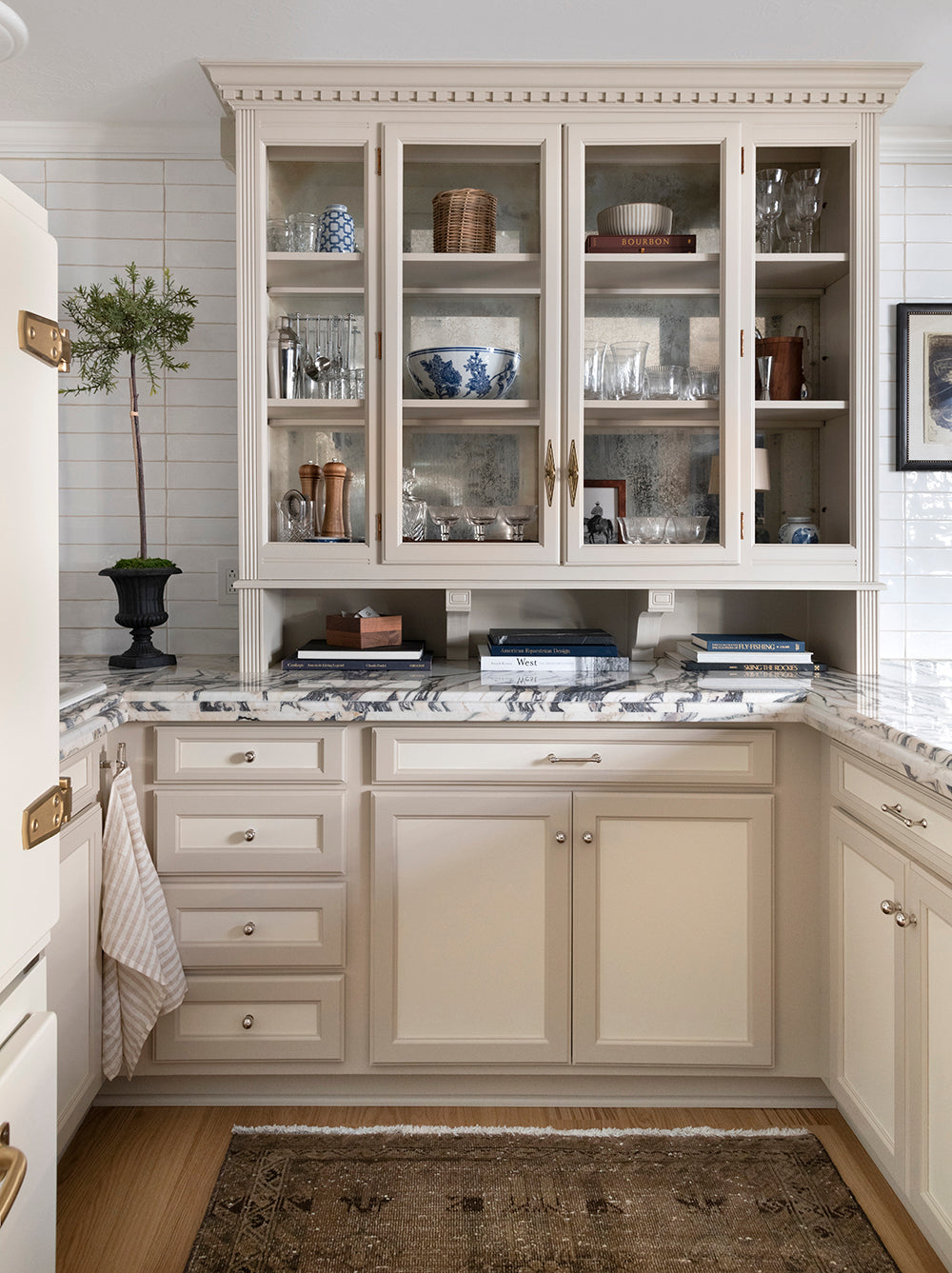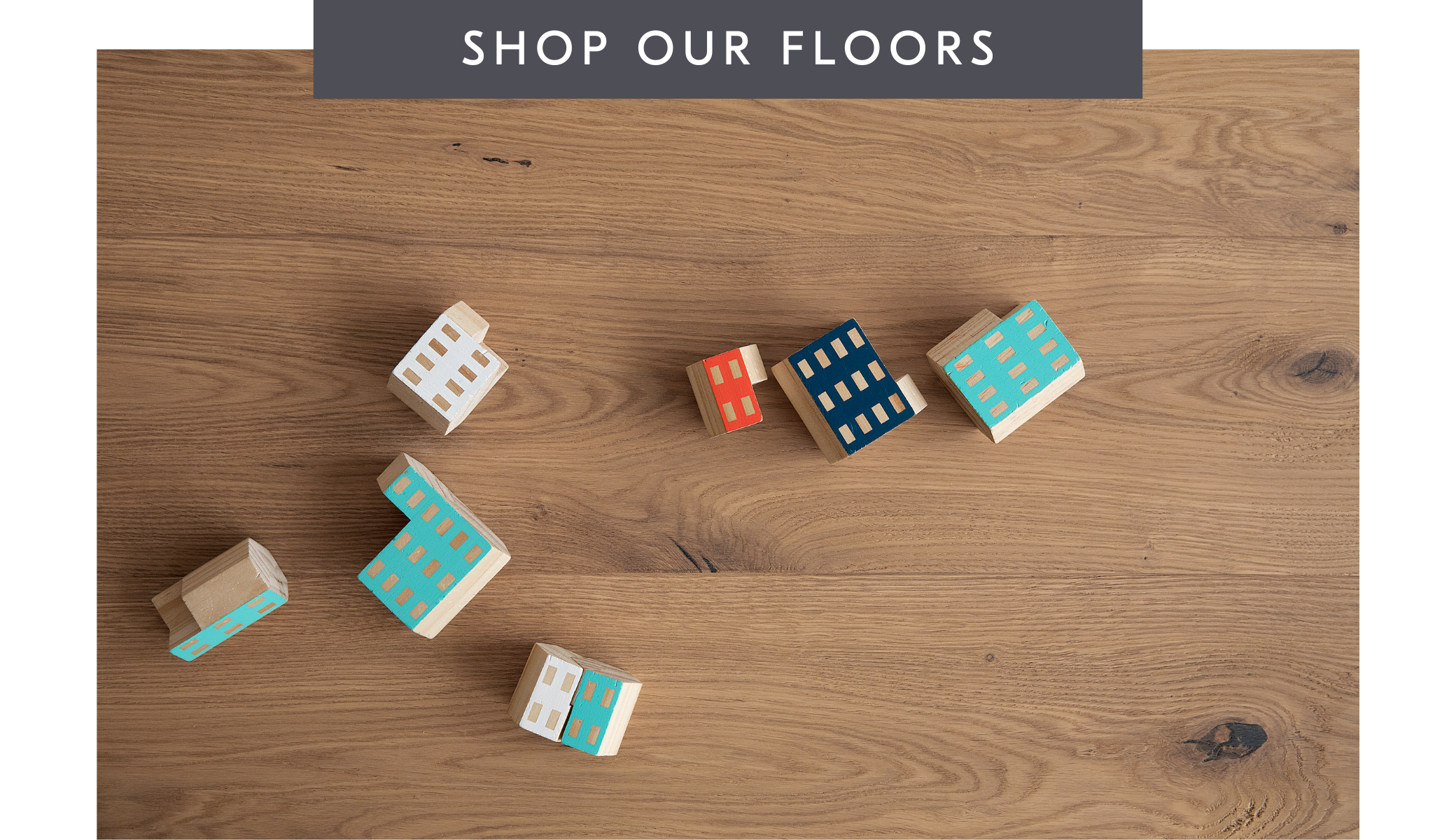October 17, 2022
3 Tips for Installing Wood Floors in a Basement
by Haley Holm-Pedersen

Has a contractor told you that installing wood floors in the basement is a no-go? It’s a common misconception in the industry that hardwood can never be laid in the basement. But the reality? The right wood floors can be installed just about anywhere. You can get more livable square footage out of your home without sacrificing the comfort and beauty of a real, wood floor. Your basement design plans just got cozier.
The Go-To Installation Method for Basements
In your home overall, the choice between floating, stapling, or gluing your floors comes down to a mix of personal preferences and project specifics. But for basements? Floating is the gold standard, for good reason.
“Floating” a floor is an installation method where each board is connected to the next, and the boards are not affixed to the subfloor in any way. Instead, the linked boards “float” over the subfloor. Nearly all of our floors can be floated thanks to a clever locking system that keeps the boards closely connected and very stable.
So why is floating the most common installation type in basements? First, it’s the easiest way to install over a slab. Since there is no wood subfloor to staple into on a slab foundation, floating is an easy choice. Glue-down installation also works over slabs, but isn’t common in basements due to their proximity to the water table. Floating is also generally fast, and preferred by DIY’ers. Second, it’s the best method to protect your floor from water below, especially when paired with one of our underlayments. Floating floors have the flexibility to move as humidity changes, making them very resilient to moisture.

Stay a Step Ahead of Moisture
Consider underlayment your layer of armor when it comes to moisture. This step is crucial to protecting a basement floor (and we recommend it throughout the house as well). Underlayment is a layer of material between your subfloor and flooring that acts as a moisture barrier. Go with our Nature All-In-One for the added benefit of antimicrobial properties (mold literally cannot grow against it).
If you’re looking for even more protection from moisture, products from our Rebels family are a great choice. These floors are waterproof and worry-free. They make a great alternative to vinyl or laminate flooring.
Recreate the Main Floor Look For Less
Chances are, you’re more willing to invest in the perfect design on your main floor. But that doesn’t mean your basement needs to get the short end of the stick. Many Stuga customers choose one of our bestselling wide planks for their main floor and a narrower plank or Rebels lookalike for the basement.
Want to know which floors work well together? Here are a few matches that complement each other. In the true neutral category, Fika and Little Square, work well together. For a more classic, unstained white oak, Old Town and High Five complement Tivoli. If you want to go lighter, try Greta upstairs with Moonlight or Giddy Up in the basement. Check out our Families page to see how our floors compare in color, finish, size, and more.
Basements can be overlooked when it comes to design, but they don’t need to be. Take a few steps to ensure their longevity, and your wood floors will be happy for years to come in your newly finished basement space.






















